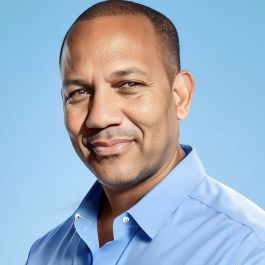For engineers working in machine learning, continuously learning is part of the job.
On the frontier of modern technology like AI, ML engineers have a direct impact on the future of a quickly evolving industry. To continue making a knowledgeable impact, however, engineers often need to go beyond their core programming and product management tasks.
Being an ML engineer requires being a part-time scholar, as well.
Working with new technologies can involve a variety of educational processes, ranging from regular study of the latest AI news to training large language models and authoring new methodologies to enhance product development. Given the speed at which AI technologies are advancing, regular research is a must for ML engineers looking to build the most efficient and scalable AI-powered products for their teams.
Even outside of ML engineering teams, the vast majority of professionals are interested in learning how other professionals are using AI. According to LinkedIn Learning’s Workplace Learning Report, 80 percent of workers want to learn more about how to use AI in their professional work.
For engineers at Grammarly and GoodRx, daily reading and regular networking allow engineers to share knowledge, keep their skills sharp and stay motivated as they build some of the most exciting new products. Built In San Francisco spoke with ML engineers from both teams to get an inside look at the research and innovation these teams get up to daily.
Grammarly provides writing resources and a smart writing assistant that supports users’ communications across multiple applications and platforms.
Tell us about a typical day with Grammarly. What sorts of problems are you working on? What tools or methodologies do you employ to do your job?
My day at Grammarly begins with a stand-up meeting with my project team. Because we operate in a remote-first environment with team members across different time zones, staying synchronized on progress, challenges and priorities is crucial.
I spend significant time training models, performing prompt engineering and experimenting with and enhancing our ML service. I use tools such as scikit-learn, PyTorch, LangChain and Jupyter Notebook to build and train models.
In the afternoon, I dedicate more focused time to research, development and idea exchanges. When we are launching new features to production, I often collaborate with a back-end engineer through pair programming sessions. These sessions allow us to efficiently deploy new ML changes to our QA environment and assess their impact on the product. Additionally, we have recurring ML team meetings for in-depth discussions, idea exchanges and feedback on specific methods we are testing.
I typically end my day by taking quick notes on my achievements and reflecting on areas for improvement. On Fridays, I reserve half an hour for a weekly self-review to evaluate my progress and set goals for the upcoming week.
Tell us about a project you’ve worked on that you’re particularly proud of.
I'm particularly proud of my current project, Gramms. This project started as a hackathon project and has evolved into a well-staffed bottom-up project inside the company. Gramms leverages retrieval augmented generation for better context-aware question answering.
I’m proud of this project because it allows Grammarly to explore one of the most advanced fields in the AI landscape. Being part of a bottom-up project team that operates with the agility and passion of a startup has been incredibly rewarding. We execute quickly, share ideas freely and maintain a high level of enthusiasm for our work.
The impact of this project on the business is significant. It represents a crucial technical step toward delivering more intelligent and personalized communication tools. By improving our ability to handle and leverage context, we can make our product more responsive to users’ real needs, ultimately making Grammarly a more helpful and effective tool.
How do you stay updated with the latest advancements in machine learning, and how do you apply them to your work?
Staying updated with the latest advancements in machine learning is crucial for my role. Every day, I dedicate an hour to reading research papers using tools like Google Scholar and checking newsletters and blog posts. Some of my personal favorites include Huyen Chip’s blog, Lilian Weng’s blog and Alpha Signal.
“Staying updated with the latest advancements in machine learning is crucial for my role.”
Networking with other professionals in the field is another essential way I stay current. As a co-founder of the Toronto AI Practitioners Network and a steering committee member of MLOps World, I have ample opportunities to engage with experts and discuss emerging trends and technologies.
To bring back the knowledge I learn outside the company and generate value for my work, I participate in internal seminars like the NLP Guild, where AI practitioners at Grammarly share their work and exchange ideas. Additionally, I often experiment with new techniques and algorithms through side projects or pilot implementations. Grammarly encourages bottom-up project ideation, so if one of these experiments shows promise, I can propose new project ideas and help shape new AI-driven initiatives for the company.
GoodRx is a health marketplace that provides information services and discounted access to prescription medication, telehealth services and more.
Tell us about a typical day with GoodRx. What sorts of problems are you working on? What tools or methodologies do you employ to do your job?
As a GoodRx lead machine learning engineer, I have an opportunity to make a tangible impact toward reducing the high cost of prescription medications for anyone using the GoodRx app. It is immensely gratifying to design and implement the systems that can automate our business at scale as we work to optimize what prices our users pay at their preferred pharmacy.
I am also tasked with coming up with new solutions to surface content related to hundreds of health and wellness topics with the audiences that need them the most, and generally working to ensure that we can prioritize GoodRx resources to those that may need them. AI and ML is definitely something we work to leverage in my day-to-day work, and these are just a few examples.
Some of the programming languages and tools I use to develop AI and ML systems are Python, PyTorch, MLlib, and other popular machine learning frameworks. I also use AWS cloud managed services like SageMaker, Kinesis Analytics and EMR for Apache Spark and Flink as well as solutions from Databricks that support the rapid development of AI and ML solutions using continuous integration, continuous delivery MLOps methodologies.
Tell us about a project you've worked on that you're particularly proud of.
Shortly after I joined GoodRx, I was assigned to lead the implementation of Databricks for the machine learning engineering team. This project is still in development, but the goal is my work will standardize and accelerate the AI and ML model development process for the machine learning engineering team and across several other verticals at GoodRx. The GoodRx product management team quantifies the progress and success of projects with time-to-market metrics. The ML engineering team tracks agile metrics that provide insight into project development and maintenance task velocity. These measurable metrics will serve to demonstrate the business value of my work.
How do you stay updated with the latest advancements in machine learning, and how do you apply them to your work?
Reading — a lot of reading! I always have my iPad with me, so any opportunity I get to read, I dive into my IEEE journals on AI, machine learning, pattern recognition and knowledge discovery. GoodRx offers a professional development budget that I use towards purchasing technical books on topics that directly relate to projects on our ML engineering team roadmap or technologies that are gaining traction in the industry like large language models. I also subscribe to blogs by the FAANG engineering teams and newsletters like TLDR AI.
“Any opportunity I get to read, I dive into my IEEE journals on AI, machine learning, pattern recognition and knowledge discovery.”
While I do get many ideas from my readings on the latest advancements, the reality is that “bleeding-edge” approaches are exciting and hold great promise, but attempts to apply them can often lead to implementation challenges that result in schedule and cost inflation and ultimately project failure and abandonment. Mature ML engineering teams aiming to create value for their businesses generally first consider proven AI and ML models, technologies and engineering methodologies for their deployments.









